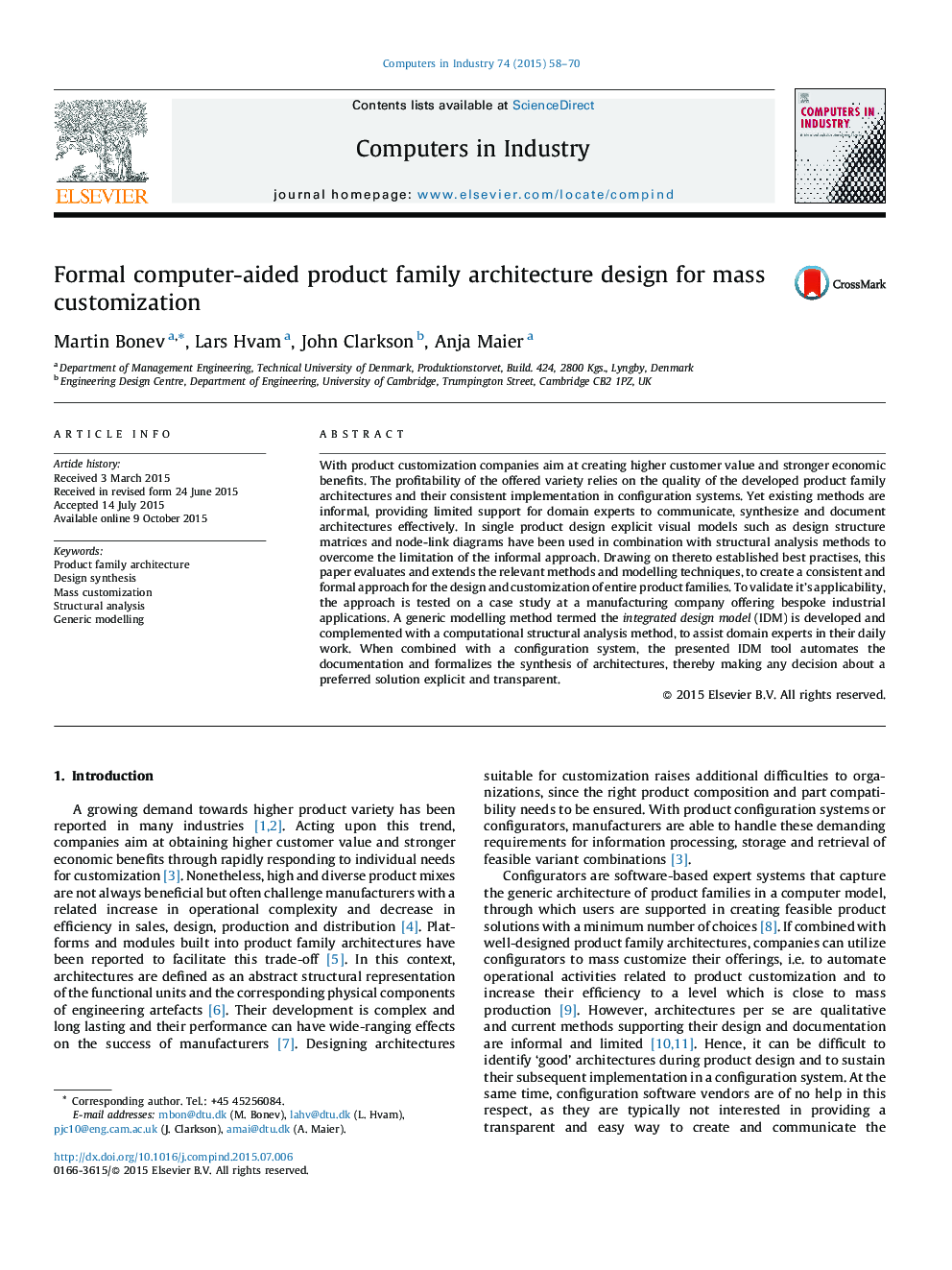| Article ID | Journal | Published Year | Pages | File Type |
|---|---|---|---|---|
| 508816 | Computers in Industry | 2015 | 13 Pages |
•Conventional methods for product family architecture design are informal and limit the support for architecture communication, synthesis and documentation.•A formal computational approach requires the integration to configuration systems, improved generic models and extended structural analysis methods.•Product family architectures can be modelled interchangeably with generic design-structure matrixes, generic node-link diagrams and product variant masters.•Supportive tools automate the documentation and formalize the synthesis of architectures, thereby making any decision about a preferred solution explicit and transparent.
With product customization companies aim at creating higher customer value and stronger economic benefits. The profitability of the offered variety relies on the quality of the developed product family architectures and their consistent implementation in configuration systems. Yet existing methods are informal, providing limited support for domain experts to communicate, synthesize and document architectures effectively. In single product design explicit visual models such as design structure matrices and node-link diagrams have been used in combination with structural analysis methods to overcome the limitation of the informal approach. Drawing on thereto established best practises, this paper evaluates and extends the relevant methods and modelling techniques, to create a consistent and formal approach for the design and customization of entire product families. To validate it's applicability, the approach is tested on a case study at a manufacturing company offering bespoke industrial applications. A generic modelling method termed the integrated design model (IDM) is developed and complemented with a computational structural analysis method, to assist domain experts in their daily work. When combined with a configuration system, the presented IDM tool automates the documentation and formalizes the synthesis of architectures, thereby making any decision about a preferred solution explicit and transparent.
Graphical abstractFigure optionsDownload full-size imageDownload as PowerPoint slide
